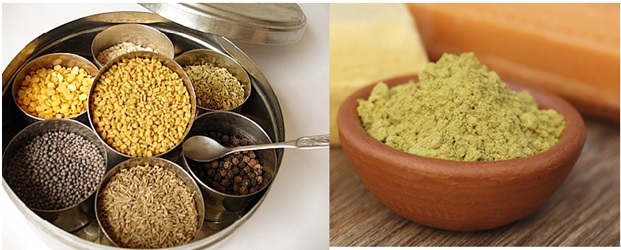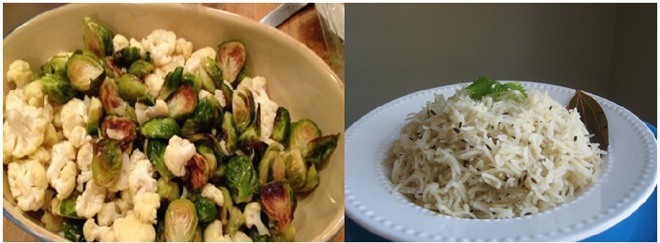
Thyroid problems and Natural cure
What is a Thyroid gland? The thyroid is a butterfly-shaped gland in the front of the neck. It produces hormones that control the speed of human metabolism — the system that helps the body use energy. Thyroid disorders can slow down or rev up metabolism by disrupting the production of thyroid hormones. When hormone levels become too low or too high, one may experience a wide range of symptoms.
Weight Gain or Loss
An unexplained change in weight is one of the most common signs of a thyroid disorder. Weight gain may signal low levels of thyroid hormones, a condition called hypothyroidism. In contrast, if the thyroid produces more hormones than the body needs, you may lose weight unexpectedly. This is known as hyperthyroidism. Hypothyroidism is far more common.
Feeling Fatigued
Feeling fatigued, exhausted, tired and having little or no energy during the day are common issues often associated with thyroid problems. Some people may not be able to carry out daily activities without a nap or short breaks. These can all be signs of thyroid trouble, especially if it is quite different from your past level of fitness or energy. With hyperthyroidism, you may not be able to sleep well at night, leaving you exhausted during the day. With hypothyroidism, you may sleep at night but still feel tired in the morning or even all day.
Swelling in the Neck
A swelling or enlargement in the neck is a visible clue that something may be wrong with the thyroid. A goiter may occur with either hypothyroidism or hyperthyroidism. Sometimes swelling in the neck can result from thyroid cancer or nodules, lumps that grow inside the thyroid. It can also be due to a cause unrelated to the thyroid.
Depression and Anxiety
If you have symptoms of depression, anxiety and panic disorder that do not respond to medicines and therapies, they can be signs of an underlying thyroid disorder – hypothyroidism or hyperthyroidism. While depression is linked with hypothyroidism, anxiety and panic attacks indicate a problem of hyperthyroidism. Reduced thyroid hormone production has a direct impact on the level of “feel good” serotonin in the brain. Due to this, a person may go through mood swings, mild to severe depression, or have panic attacks without any reason. Although depression or anxiety can indicate thyroid disease, these symptoms alone are not enough to conclude that you are suffering from a thyroid disorder.
Changes in Heart Rate
Thyroid hormones affect nearly every organ in the body and can influence how quickly the heart beats. People with hypothyroidism may notice their heart rate is slower than usual. Hyperthyroidism may cause the heart to speed up. It can also trigger increased blood pressure and the sensation of a pounding heart, or other types of heart palpitations.
Hair Loss
Unexplained hair loss is often associated with thyroid problems. Low thyroid hormone levels can disrupt your hair growth cycle and cause more hair loss than normal. Both hypothyroidism and hyperthyroidism can cause hair to fall out. In most cases, the hair will grow back once the thyroid disorder is treated.
Feeling Too Cold or Hot
Thyroid disorders can disrupt the ability to regulate body temperature. People with hypothyroidism may feel cold more often than usual. Hyperthyroidism tends to have the opposite effect, causing excessive sweating and an aversion to heat.
Hypothyroidism
Hypothyroidism can cause many other symptoms, including:
- Dry skin and brittle nails
- Numbness or tingling in the hands
- Constipation
- Abnormal menstrual periods
- Muscle weakness or trembling hands
- Vision problems
- Diarrhea
- Irregular menstrual periods
Because thyroid disorders can cause changes in menstrual cycle and mood, the symptoms are sometimes mistaken for menopause. If a thyroid problem is suspected, a simple blood test can determine whether the true culprit is menopause or a thyroid disorder — or a combination of the two. Hyperthyroidism is also more common in women. A family history raises your risk of either disorder.
Tests:
1) Testing neck
2) Thyroid gland functioning test
3) Diagnosing thyroid disorder
4) Hashimoto’s disease test – an autoimmune disease that causes hypothyroid
5) Test of eyes :swelling in eyes
Thyroid Disorder Complications
When left untreated, hypothyroidism can raise cholesterol levels and make you more likely to have a stroke or heart attack. In severe cases, very low levels of thyroid hormones can trigger a loss of consciousness and life-threatening drop in body temperature. Untreated hyperthyroidism can cause serious heart problems and brittle bones.
Natural Hypothyroidism Treatment
- Go Gluten and A1 Casein FREE – the most common allergies and food intolerances today are from wheat and dairy products because of the hybridized proteins of gluten and a1 casein. These proteins can cause “Leaky Gut” which in turn will cause inflammation of the thyroid and affect its function. Follow a grain-free diet or at least go gluten free.
- NO BPA – Bisphenol A (BPA) is found in plastic bottles and can disrupt your endocrine system and effect your thyroid. Drink using glass, stainless steel, or BPA free plastic bottles.
- Check Your Iodine Levels – If they are low, use a kelp or organic liquid iodine supplement.
- Heavy Metal Detox : Use turmeric, ginger and Cilantro to detox these harmful metals from cells and organs.
- More Selenium – Make sure you are getting enough selenium in your diet but also do not go overboard. Some of the best selenium containing foods are brazil nuts, salmon, sunflower seeds, beef, mushrooms and onions.
- Adaptogen Supplements – Holy basil or Tulasi and Ashwagandha herbs can lower cortisol levels and improve thyroid function. Ashwagandha is an adaptogenic herb popular in Ayurvedic medicine, that has shown incredible results for lowering cortisol and balancing thyroid hormones. Rhodiola Rosea, also known as “golden rod,” is an adaptogen herb with tremendous fat burning, energy enhancing and brain boosting power. By combining these two adaptogenic superstars together you can heal your thyroid, balance cortisol and burn more fat.
- Silver Fillings Removal – if you have amalgam fillings talk with a DAMS mercury safe dentist about proper removal.
- Lower Carbohydrate Intake – Lower your intake of sugars and grains and replace them with healthy fats. Most women especially consume far too many carbs which increase estrogen and negatively affect the thyroid. Instead, consume healthy fats that will balance hormones, like: coconut oil, coconut milk, avocado, chia, flaxseeds, and hemp seeds.
- Yoga for hyperthyroid problems
- Bridge Pose (Setubandhasana)
- Cat Stretch (Marjariasana)
- Child Pose (Shishu asana)
- Corpse Pose (Shavasana)
- Slow-paced Surya Namaskars practiced with mantra chanting will have a calm and soothing effect.
Caution: This article is for educational purpose only. If you have thyroid problems or symptoms consult your physician.
Image:Www.WerIndia.com
References:
Author: HealthyLife | Posted on: June 16, 2015
« Tips for Better Health if you are a sedentary worker How to maintain overall health during menopause? »








